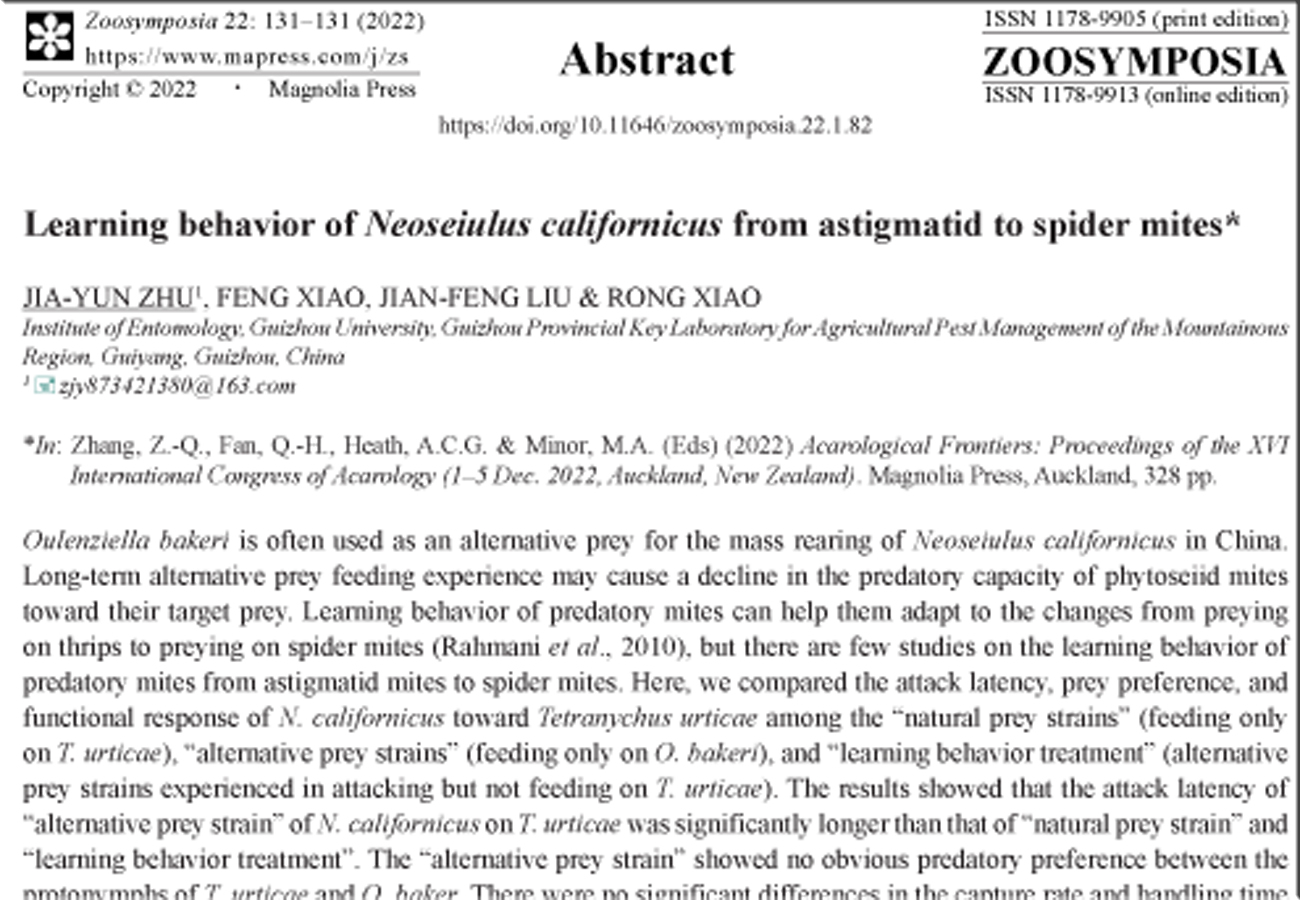Abstract
Oulenziella bakeri is often used as an alternative prey for the mass rearing of Neoseiulus californicus in China. Long-term alternative prey feeding experience may cause a decline in the predatory capacity of phytoseiid mites toward their target prey. Learning behavior of predatory mites can help them adapt to the changes from preying on thrips to preying on spider mites (Rahmani et al., 2010), but there are few studies on the learning behavior of predatory mites from astigmatid mites to spider mites. Here, we compared the attack latency, prey preference, and functional response of N. californicus toward Tetranychus urticae among the “natural prey strains” (feeding only on T. urticae), “alternative prey strains” (feeding only on O. bakeri), and “learning behavior treatment” (alternative prey strains experienced in attacking but not feeding on T. urticae). The results showed that the attack latency of “alternative prey strain” of N. californicus on T. urticae was significantly longer than that of “natural prey strain” and “learning behavior treatment”. The “alternative prey strain” showed no obvious predatory preference between the protonymphs of T. urticae and O. baker. There were no significant differences in the capture rate and handling time among the three treatments. Our results indicated that the long-term rearing on alternative prey mainly prolonged the attack latency of N. californicus to the target prey and changed its prey preference, while learning behavior could help alternative prey strain of N. californicus to shorten the attack latency and restore its prey preference toward target prey (Zhu et al., 2022).
References
Rahmani, H., Schausberger, P., Hoffmann, D. & Walzer, A. (2010) Food imprinting revisited: early learning in foraging predatory mites. Behaviour, 147(7), 883–897. https://doi.org/10.1163/000579510X495799
Zhu, J.Y., Liu, J., Qin, L., Xiao, F., Liu, J.F. & Xiao, R. (2022) Learning behavior of Neoseiulus californicus (Acari: Phytoseiidae) can help in adapting from feeding on alternative prey to target prey. Systematic and Applied Acarology, 27(10), 1957–1969. https://doi.org/10.11158/saa.27.10.8

